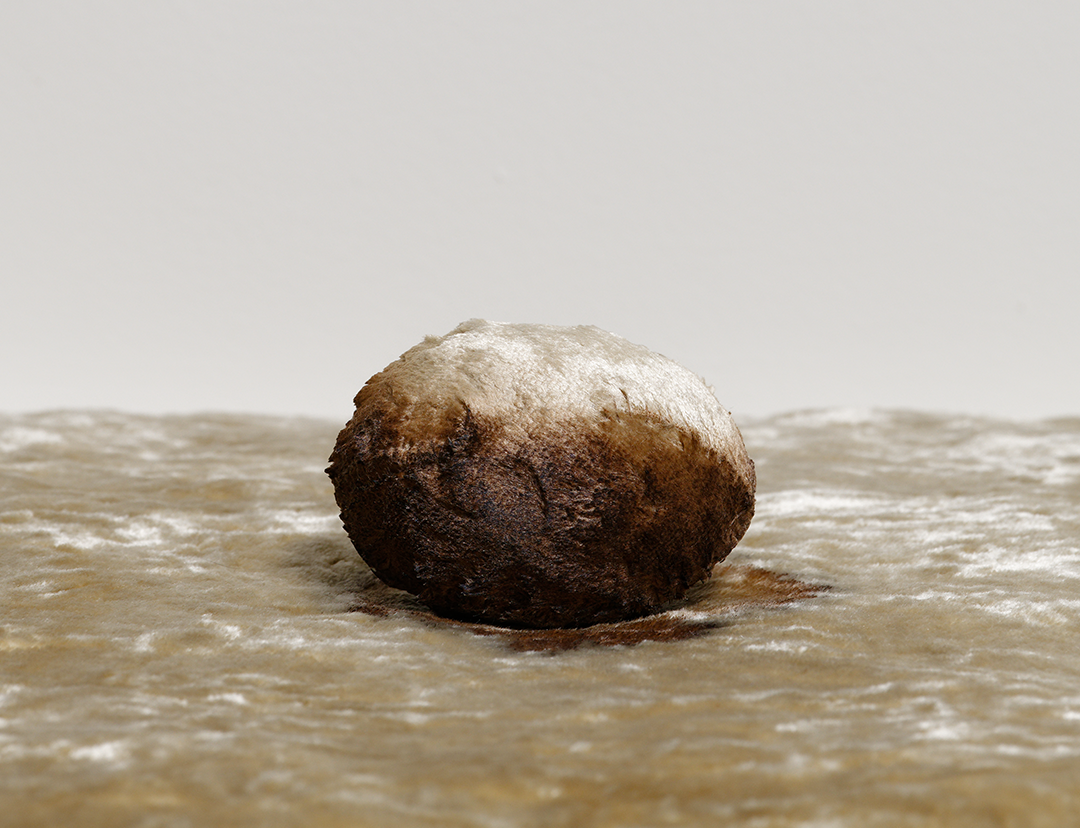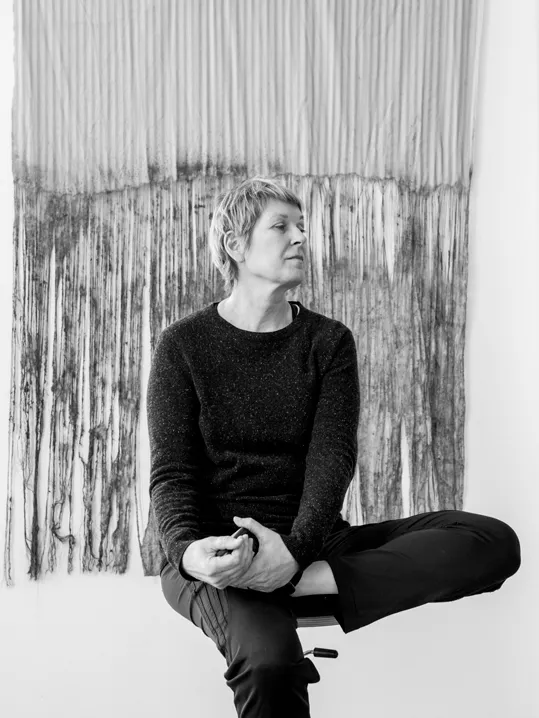
“For me, material is never inert”. Edith Dekyndt
“It’s not that I decided specifically to feature so-called ‘poor’ materials. I always try to work with materials that have already lived one life”.
These display cases provide a unique exhibition space that is new for you. How did you envision this project?
In researching the history of display cases, I learned that they originated in the early nineteenth century, when it first became possible to produce impeccable, large glass surfaces at an industrial level. People began to use them for world’s fairs, at first in England, and then in Parisian covered passageways and boutiques, which began to flourish at the end of the nineteenth century. The former stock exchange in which we find ourselves is a monument that was reconfigured during the 1889 World's Fair, and these display cases were in all likelihood built to exhibit goods, materials, and products from the world over, especially France’s colonies, some of which we can see in the painted panorama that adorns the Rotunda. So, the display case has always served as an exhibition space, originally as a showcase for goods. I am questioning the status of the “thing” in the display case, given that we unconsciously and immediately construe it as a piece of merchandise. What happens if this object is a work of art? What does it mean if it is placed in a display case, like a product? I am very interested in display cases as objects in and of themselves. When I do my installations, I often use glass containers, vivariums, and aquariums. They remind me of ethnology museums.
You work with humble materials that time, use, and wear have ennobled. What status do you grant to these objects?
I don’t consider materials to be humble or noble. I was inspired in particular by a book called Les Chiffonniers de Paris, or “The Ragpickers of Paris”, which describes the city’s sanitation system prior to the introduction of garbage bins. At that time, people gleaned, separated, collected, and resold all manner of refuse to be found in the street. This was the lowliest profession in the entire social hierarchy, essential as it was. There are a lot of damaged, worn-out materials in the display cases; nothing is new, aside from a few containers. I try to work with materials that have already lived a life, with things and materials that inspire me, that I have kept in my studio, and which I wanted to keep for myself. Sometimes, these are the first pieces in a series; they mark something unfinished, as much as we can ever say that a work will one day be finished. These display cases lie between a finished piece and a ready-made, between a work and an object. The boundary between these states is highly fluid and poetic.
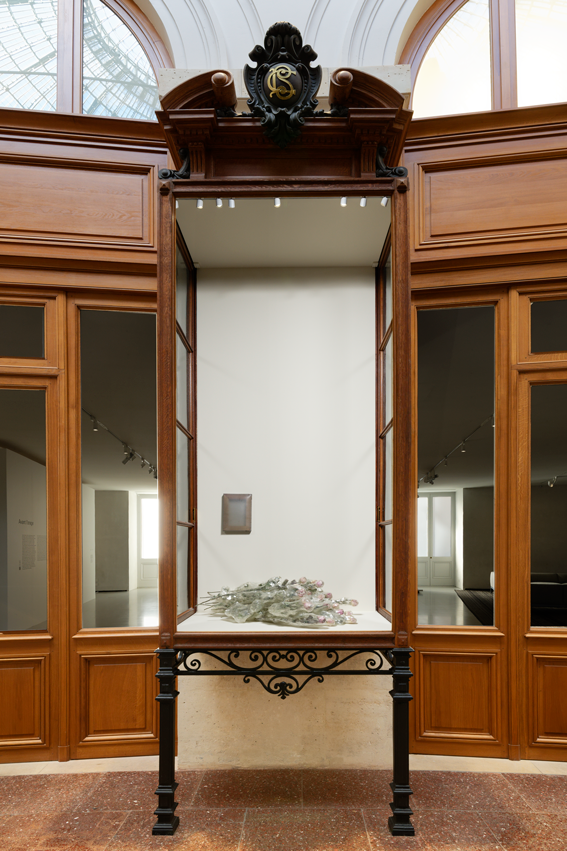
You take care of all these materials and these objects. Does “taking care” form part of the work?
Taking care, cleaning, restoring, re-deteriorating... It’s all a practice. For me, a material is not inert. It is alive if we don’t see it as a good and if we are genuinely interested in its origins, its behaviour, and its inner life. Food is a good example of this. I installed bread and sugar in several of the display cases in the Passage. When we look at them, we identify them as objects. But the moment we ingest food, it acquires another status, interacting with the body in a very active way. I sometimes bury fabrics in different places that will deteriorate in specific ways, depending on the mineral and biological qualities of the soil, as well as on the time spent in the earth and the very material of the fabric. Everything comes from the earth. Everything is in motion. However, my objects are very stable, very calm, very quiet. And yet, each display case is living for the nature of the elements contained within. You could say that they are inspired by the notion of a “still life”, so to speak. Most of the display cases are a kind of “slow life”, ultimately.
You could say that they are inspired by the notion of a “still life”, so to speak. Most of the display cases are a kind of “slow life”, ultimately.
You could say that they are inspired by the notion of a “still life”, so to speak. Most of the display cases are a kind of “slow life”, ultimately.
Can you explain how you chose the title “The Origin of Things”?
I have a large quantity of things, materials, and elements in my studio that I stage, as if they formed part of a theatre of objects; you can sense that in how I arrange them on the shelves. These objects are things that inspire me, that I keep, that I move around, that I wrap up, and that I love. And sometimes, I use them. I asked myself the question: why do I consider this object to be a work that can leave the studio to be exhibited? This boundary between object and art object is as subtle as it is essential. That was the thought that I visualised in the twenty-four vitrines, using elements that I have been working with for more than forty years. So, the origin of things is the origins of my work, its materials, its forms, its countries, and the cities from which all of this comes.
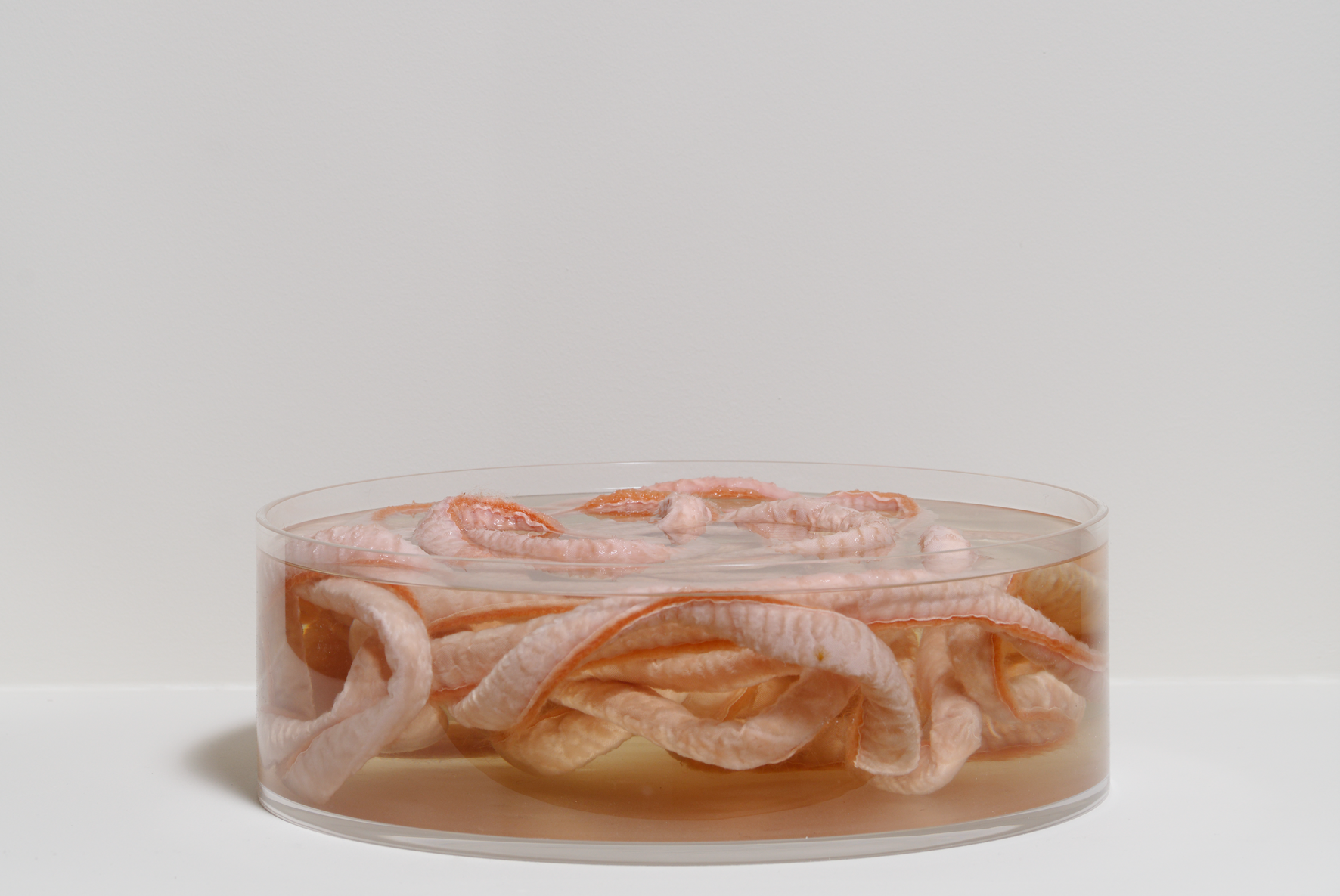
In what frame of mind would you like visitors to approach this project, so that they have the best experience possible?
Behind every ensemble or object that I placed in a display case is a story, which people can discover with the help of the captions, because I made these in Brazil, Thailand, and even India. Aside from reading that, I think that visitors should approach these compositions as objects. In reality, the objects are always very open, despite the intentional absence of a title for each one. This entails asking oneself whether or not they are objects. I don’t even have an answer for that. I believe one should approach them depending on one’s own subjective state, without trying to explain why this object is next to this other one, even when there are correspondences, especially with the panoramic canvas in the dome of the museum.
What conversation did you initiate with the architecture and nineteenth-century decor of the Bourse de Commerce?
In this project, I forged a connection with the large marouflage canvas, but I refrained from adopting too illustrative an approach. I looked for details in objects such as rolls of silk and cotton, jars, and all kinds of materials that came from colonised countries. I didn’t want to show “things” as “objects”, as in a store window. I instead wanted to work with the notion of still life, which to me implies calm and quiet, and which I find appropriate, because the material is not inert. It is alive. Most of the display cases that I composed are alive; each one has an inner life. There is a whole heap of details in this painting that I sought out: snow, silk fabrics, the finery worn by several figures, as well as beer, which I translated into yeast, and, thus, bread. The painting inspired things and places, temperatures, climates, and the nature of things.
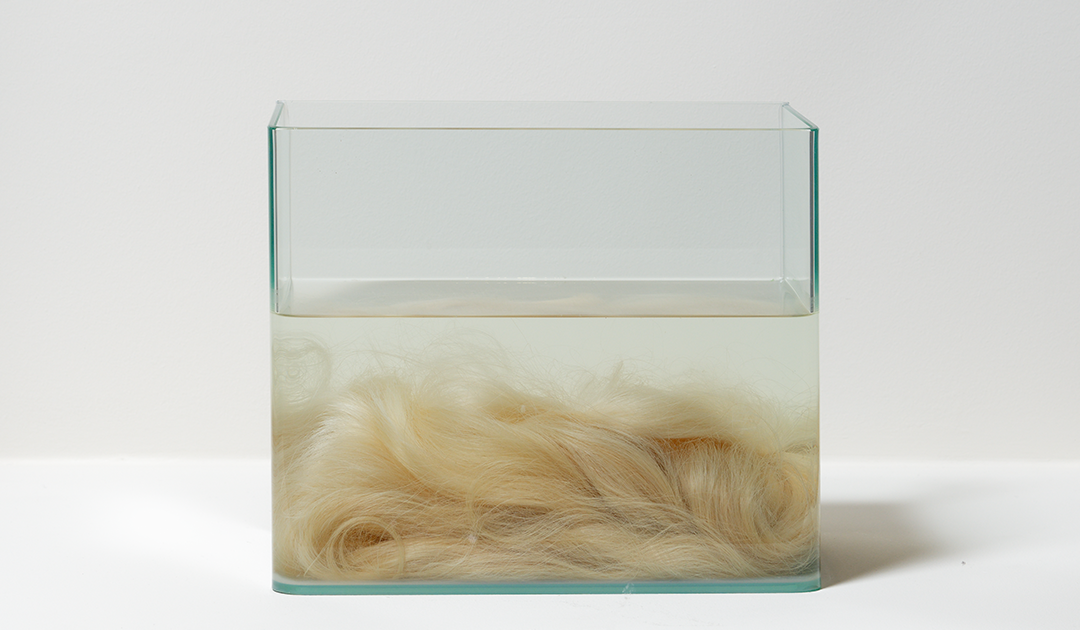
Your works are adjacent to the exhibition Avant l’orage, or “Before the Storm”. What storm do you think is brewing, and how are you reacting to it?
I would say that this storm is a tempest or a cyclone that awaits us.
I would say that this storm is a tempest or a cyclone that awaits us. As an artist, I have a particular relationship to the notion of ecology, which has always been present in my work in some way. Even though I do not claim to make work concerning ecology or that is “ecological”, I function in an ecological manner, from my logistics to what I exhibit, especially by packaging almost everything in recycled paper.
What is your favourite meteorological event?
Fog. It dematerialises images and turns them into something else. And because I am very myopic, it’s like what I see when I don’t have my lenses in! I think it's quite beautiful to share this vision of the world with other people. And I think it’s also tied to my Belgian roots. My father used to say: “The foxes are smoking their pipes” whenever the fog hung especially low. These are water droplets suspended in the air. It’s pretty incredible!
What season makes you the most nostalgic each year?
I really like the progression of the four seasons. I think I would have a hard time in a country where this cycle doesn’t exist.
I really like the progression of the four seasons. I think I would have a hard time in a country where this cycle doesn’t exist. Each season influences the light, the energy, and the humidity levels. That is what I translate in my work. Most of the objects I use have a meteorological reaction to these parameters and to temperatures.
